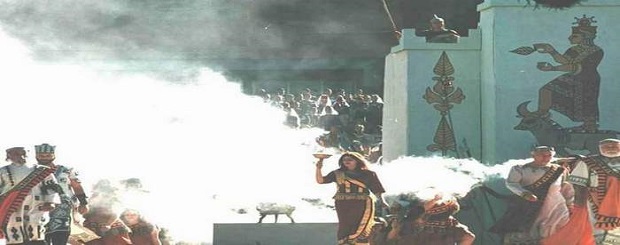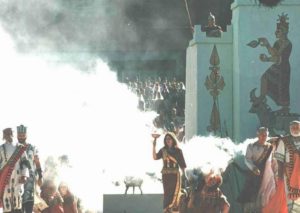
Art-A-Tsolum – Urartu, The First Armenian State – David Marshall Lang
May 27, 2019 Antiquities: Art-A-Tsolum – PREVIOUS ARTICLE:
The past existence of the Kingdom of Van was discovered thanks to Armenian historian Khorenatsi’s manuscripts, in which he referred to the kingdom as an Armenian state. An excerpt from “Armenia: Cradle of Civilization” by late oriental scholar David Marshall Lang, which was renamed (censored) “Armenia: Creator People” by Georgian editors and published in the USSR, reads:
“Chapter 4. Urartu – the first Armenian state
The Armenian chronicle attributed to the authorship of Movses Khorenatsi tells the story of Assyrian queen Semiramis and her unrequited love for Armenian prince Ara the Beautiful.
Because of this love, she invaded Armenia with her huge army [Book 1, Chapter 16]. In the ensuing battle, Ara chose to die rather than submit to the queen’s passions. After the death of Ara, inconsolable Semiramis left the fertile valley of the Araks and retreated to the south.
She arrived at the eastern shore of a large salt lake (Lake Van), where she saw a high hill stretching from east to west. Its northern slope gradually descended to the plain, while the southern, rocky and steep, rose to the skies. At the foot of this hill flowed a stream of sweet clean water. Along it, rich villages were scattered across the valley.
Then, the chronicler talks about how Semiramis fell in love with this land and built there a magnificent city with wide streets, stone houses, and public baths. On its outskirts grew green orchards and vineyards. An entire network of irrigation canals provided plenty of water to its inhabitants. The inner city was fenced with a high and solid wall with a bronze gate.
Semiramis personally chose a place on the top of a majestic cliff – the remains of the fortress walls survived to our day – and erected a royal palace, “secluded and terrifying,” which was more luxurious than all the other structures of the magnificent capital.
No one was given the honor to see the treasures hidden inside the palace, reports Movses Khorenatsi. However, guests could see the entrance to the temples and dwelling of the queen dug in the stone of the steep cliff.
Many inscriptions were written on the rocks, which spoke of the exploits and campaigns of Queen Semiramis, but they were written in a language that none of the people living on earth could read or decipher.
Such is the semi-legendary medieval history of the founding of Van. Prince Ara the Beautiful can be identified with the historically existing Urartian King Aram, or Aramu (circa 880-844 BC), who was indeed a contemporary of Semiramis, the wife of the Assyrian ruler Shamshi-Adad.
Although historical sources do not confirm the fact that Semiramis has ever invaded Armenia or tried to win the love of Ara the Beautiful, the chronicle of Movses Khorenatsi gives us the exact date of the foundation of Van and the Kingdom of Urartu.
Indeed, taking into account the fact that Assyrian and Urartian sources could not be known to Movses Khorenatsi, he gives us more than it was supposed to be to understood in that era.
Movses Khorenatsi became one of the first Armenian writers known to Western scholars. At the very beginning of the 19th century, an excerpt from his “History of Armenia”, the contents of which were retold above, ignited the imagination of French orientalist Antoine-Jean Saint-Martin, who persuaded the Asiatic society and the French government to support the research project of “the city of Queen Semiramis.”
Young German professor from Hesse Friedrich Eduard Schulz volunteered to carry out this mission and in 1827 arrived in Turkey, just at the peak of the Russian war against Persia and then against Turkey.
Fearless Schultz safely reached Van and even received permission to visit the fortress, which was officially closed for such visits. He found that the fortress was inhabited by one old janissary with a tame bear and a bronze cannon, more suitable for a museum than for military service.
On the cliff edge, under the fortress, Schultz noticed priceless Urartu cuneiform inscriptions, which were the goal of his trip. Schulz himself descended in a cradle by the steep cliff and, not understanding a word of the language in which the inscriptions were written, made the most rigorous copies of all the cuneiform texts embedded in the stone.
These copies, a total of 42, were sent to the Paris Asian Society, where they were facsimile published in 1840. In 1829, Schultz himself was treacherously murdered by the Kurds in a wild area east of Lake Van. The tragedy cut one of the most heroic chapters in the history of the study of the Middle East.”

allinnet.info/antiquities/urartu-the-first-armenian-state/
